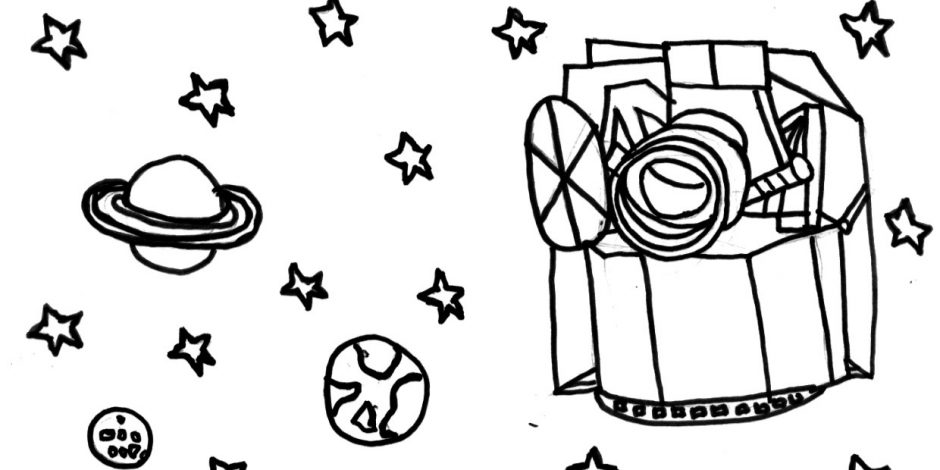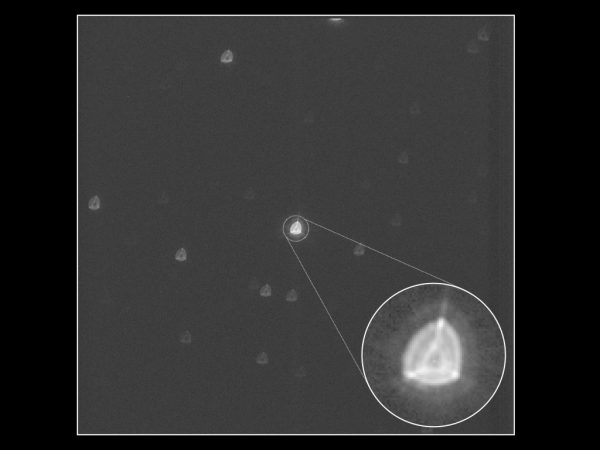CHEOPS first check-up

After months of uncertainty about the launch date of the CHEOPS satellite, the launch date was finally set for December 17, 2019. A delegation from the Universities of Bern and Geneva were on hand on the scheduled date to attend this unique event in Swiss space history. Although the launch was delayed by 24 hours for technical reasons, it went off without a hitch. On December 18 at around noon Swiss time, everyone involved in the design, construction and science of the satellite could start breathing: CHEOPS was orbiting the Earth in the right orbit. But this was only the first step. Willy Benz, astronomer at the University of Bern and project manager, was smilingly aware of this. “It’s true that it’s very satisfying to know CHEOPS is in the right orbit, but until we have a light curve with the required precision, I won’t really be able to rest easy ».
Once CHEOPS was properly installed in orbit, tests on the operation of CHEOPS could begin. The first took place on January 8 with the taking of the “darks”. This simply involves taking an image without illuminating the receiver and transmitting it to the ground to see if the camera and satellite-to-ground transmission are working. Then came one of the crucial moments in the satellite’s commissioning: the opening of the cover. The opening was successfully completed on January 29th.
Everything then was in place to take the first images, “they were very important for us to be able to assess whether the optical elements of the telescope had come out of the rocket take-off unscathed,” explains Willy Benz, “and when the first images of a star field appeared on the screen, everyone immediately understood: the telescope is working ». The images, however, could surprise the general public because the stars were blurred and triangular in shape. “Nothing could be more normal,” according to Willy Benz, because the telescope was intentionally defocused (to blur the images). The light collected is distributed over many pixels, to reduce the effect of the satellite’s movements on the images and increase photometric accuracy. Always according to the Bernese astronomer, the images would even be of better quality than expected, but before dedicating the satellite to the science for which it is intended, a number of tests still need to be undertaken. Nicolas Billot, head of scientific operations at the University of Geneva, travelled to Madrid, more precisely to Torrejon, where the Mission Operation Center, the MOC, is located.

Nicolas Billot, what was the objective of your stay in Madrid?
We went there to join the team responsible for validation tests on the satellite’s behaviour, the functioning of the telemetry link, the ground equipment, in order to make sure that everything works normally. We had to detect and solve the eventual problems related to the conditions of use of CHEOPS in flight.
Who was there?
The MOC team which ensures the link between the Geneva SOC and the satellite via the communication antennas, an ESA delegation, the Airbus team, of which the “flight director” is a member, it is she who orchestrates the operations and two Swiss teams, the Bern team linked to the instruments with Andrea, Chris, Attila and Thomas and the Geneva team linked to the NCS composed of Mathias, Adrien and myself.

Nicolas Billot, head of scientific operations
What was your time schedule?
The main activity was to design an observation schedule every two or three days to be sent to the satellite. During this time, we received the observations from the previous schedule that we had to analyze to see if everything was as expected. The volume of data collected was relatively large for our small team.
Is the data flow continuous?
Not quite. Data arrive (and leave) in waves, about 3 to 4 times a day, as the satellite passes over Madrid. We had a total of just over 30 minutes of cumulative communication time per day. That’s why we also had to test the functioning of the antennas and the transmission, too. We have two antennas at our disposal, the INTA antenna in Torrejon in front of the building where we were located and the ESA antenna in Villafranca, also in the vicinity of Madrid.

So how is the satellite behaving?
For the moment the satellite and the instrument are behaving very well. Of course there are still some minor problems to be solved and configurations to be adjusted before starting routine scientific operations, but everything is under control. Moreover, the first measurements of photometric performances are very encouraging. We are also very satisfied with the telescope’s pointing, which is accurate to the nearest arc second, even better than the predicted values. This is made possible by an ingenious trick that consists of measuring the position of the star on board from the images taken by the instrument, and providing this information to the satellite so that it can adjust its pointing in real time. This allows compensation for the so-called thermo-elastic deformations of the satellite, which deforms very slightly under the temperature difference between the bright and dark parts of the satellite.
A date for the first scientific observation ?
CHEOPS is scheduled to begin scientific operations on April 1st, or earlier if possible.
Do you already have an idea of the first target?
The first scientific target is not yet known. We already have hundreds of stars ready to be observed as part of CHEOPS’ science program. All of these stars are in competition for the schedule of observations and we won’t know the lucky winner until we have optimized the planning, or just a few days before the science operations begin.
Categories: External Newsletter, News, Uncategorized
